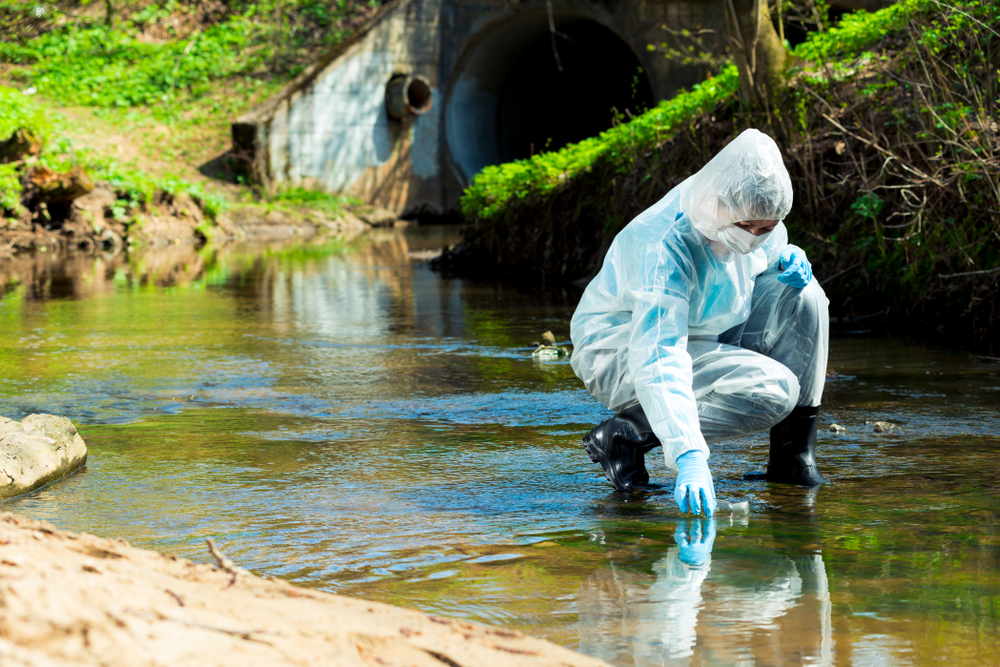Over the years, Camp Lejeune’s water contamination issue has become a significant point of contention. It’s led to a series of lawsuits filed by former residents and military personnel who allege that they’ve developed severe health conditions due to the exposure.
These lawsuits have not only shed light on the extent of the contamination but also raised questions about the government’s role and responsibility in such cases. They’ve stirred a national debate, putting the spotlight on the need for stringent regulations and accountability in military bases.
The Camp Lejeune lawsuits serve as a stark reminder of the potential long-term effects of environmental negligence. They’ve become a rallying point for
advocates pushing for better environmental policies and practices within the military.
Understanding Camp Lejeune’s Water Contamination Issue
In the heart of North Carolina, Camp Lejeune was once regarded as a haven for military personnel. However, beneath this sanctuary lay an unseen danger, a mishmash of carcinogenic chemicals leaching into the base’s water supply. This contamination stretched from 1953 to 1987, marking it as
one of the longest-lasting water contaminations in American history. It resulted in severe health conditions amongst the camp’s inhabitants and the birth of a wave of lawsuits challenging the government’s accountability.
The foundations of this water crisis lay in the various activities on the base. Dry cleaning chemicals, petroleum, and industrial solvents were improperly discarded, allowing them to infiltrate into the ground over time. These contaminants then seeped into nearby wells that were the primary sources of drinking water for the base.
As a consequence, families and soldiers were unknowingly
consuming dangerous chemicals such as
trichloroethylene, a known cancer-causing agent. As the poisonous compounds wove themselves into the fabric of daily life at Camp Lejeune, the residents continued their routines utterly oblivious to the silent menace lurking in their water supply.
A shipment of evidence delivered a crushing blow to the illusions of safety in 1982. The first batch of tests returned positive for volatile organic compounds – something which should not be present in drinking water. These tests, however, were neglected as anomalies. It wasn’t until half a decade later, in 1987, that the magnitude of the problem was recognized, and contaminated wells were finally shut down.
The health implications for those living on the base are dire and long-lasting. Many former residents and military personnel have since developed severe health conditions, including cancer, infertility, and neurological disorder, tied directly to their exposure to the toxins at Camp Lejeune. These impacts have led to numerous lawsuits and seen the victims fighting an uphill battle for justice and compensation.
The Camp Lejeune water contamination has not only highlighted the deadly effects of chemical exposure but also
shed light on serious environmental negligence on military bases. It underscores the very real need for scrutiny and accountability in these seemingly untouchable bastions of national defense.
Origins of the Lawsuits
In the wake of the Camp Lejeune crisis, the affected members decided to move the court in search of justice. The core of these lawsuits was
pain and suffering, which bind the victims with a common thread.
The Navy and the
Department of Defense (DoD) are on the receiving end of these legal actions. They’re accused of sustained negligence and lack of transparency. The key contention is that they were aware of the contaminants by the early ‘
80s but took no significant action until the
mid-’80s.
The earliest traces of the lawsuits date back to 1991, with the filing of a class-action lawsuit citing negligence and seeking compensation. Although not a straightforward case, it planted the seed of legal fights to come.
Countless individual lawsuits have been filed against United States government entities since. However, the
Feres Doctrine — a legal precedent established in 1950 — has been a significant roadblock in their pursuit of justice. The doctrine shields the government from being sued for injuries that befall members of the armed forces during their military service.
Despite the hurdles, persistence pays. A pivotal moment arrived when, in 2014, a district court judge allowed eight lawsuits filed by victims —primarily focused on those suffering from leukemia, a late-onset disease — to move forward.
| Year |
Event |
| 1991 |
First class-action lawsuit |
| 1950 |
Establishment of Feres Doctrine |
| 2014 |
District court judge allows eight lawsuits |
Although these cases signify hope for many, the judicial route isn’t without obstacles. Intense legal battles remain as each plaintiff has to prove not only exposure to toxins but also its direct link with their health condition.
Victims continue to stand strong, fight their legal battles, and await the justice they’ve sought for decades. This chapter in the long history of Camp Lejeune adds to the need for oversight and accountability in environmental management at military bases.
Health Impacts on Residents and Military Personnel
Military camps aren’t usually places where people worry about their health due to environmental factors. Yet, that’s precisely the situation for people who lived or worked at Camp Lejeune. They’ve experienced various health problems that many argue are directly linked to the water contamination.
This section delves into the serious health issues that are, often, long-term and possibly life-threatening, which have befallen the individuals exposed to the polluted water at Camp Lejeune.
Amid the residents and personnel,
cancer seems to be an all-too-common diagnosis. Various forms of cancers like breast cancer, leukemia, and kidney cancer have shown higher prevalence in those exposed to the contaminated water supply. The Center for Disease Control’s Agency for Toxic Substances and Disease Registry confirmed that exposure to the contaminants could increase the risk of these diseases.
The range of health problems doesn’t stop with cancer.
Liver disease and
neurological disorders have also cropped up among those who were at Camp Lejeune during the contamination. Notably, instances of rare diseases like
Amyotrophic Lateral Sclerosis (ALS) have been reported too. This adds another layer of complexity to the health crisis that hounds past and present residents of the camp.
Pregnant women who were exposed to the pollutants are believed to have borne a greater risk. Women living at Camp Lejeune while pregnant between 1968 and 1985 reported a high incidence of
birth defects in their children and a troubling number of
pre-term births. Investigations have linked the presence of toxins in the water to these health issues.
This life-altering impact on the health of thousands proves the gravity of the crisis at Camp Lejeune. It’s a stark reminder for people to ascertain that water supplies in their communities are safe and well-regulated.
Government’s Involvement and Responsibility
Since the contamination’s discovery, the government’s role in addressing the criticized issues at Camp Lejeune has been a core component of the ongoing legal battle. By the mid-1990s, public and congressional investigations had raised questions about the military’s past handling and technical competence on environmental issues. Plus, the legal rights of those affected had only skimmed the surface of the conversation.
In 2012,
President Obama signed the Janey Ensminger Act into law. The Act designated the
Department of Veterans Affairs (VA) to provide medical care for military personnel and family members who’d proven that they’d been at Camp Lejeune during contaminated drinkable water times.
In a bold move, the federal government allowed for
certain medical conditions to be covered, paving the way for those in need to receive the aid they deserved. However, critics pointed out that the federal government had fallen short of taking full responsibility.
Many victims of the contamination have made attempts to file lawsuits against the federal government, but have consistently faced opposition. For example, in one particular case called the
Cts Corp vs. Waldburger, the Supreme Court ruled that federal law did not override state statutes that limit the time for filing personal injury lawsuits.
Furthermore, the Department of Justice (DOJ), a federal agency, has consistently defended the military against these lawsuits. Their main argument is the
Feres Doctrine – a controversial law that prevents service members from suing the federal government for injuries suffered while serving.
The victims have consistently hit the wall in their quest for justice. It’s evident that despite the government’s involvement in providing medical assistance, the legal road to justice has been burdensome and filled with setbacks. For many victims, the fight for justice and accountability continues.
Advocacy and Push for Change
With continued hurdles in the quest for justice, it’s the advocacy groups and activists who’ve remained steadfast in the face of adversity. They incessantly push for change, demanding more transparency, and attention to the plight of the victims suffering from Camp Lejeune’s water contamination.
Across the country, influential voices have joined the chorus, amplifying the call for justice. Among these is
The Few, The Proud, The Forgotten group, composed of former servicemen stationed at the base. The collective endeavors to bring the issue to the forefront of public consciousness, steadfastly campaigning for affected individuals to get the rightful compensation they deserve.
In the political sphere, monumental efforts have been made as well. North Carolina’s senator, Richard Burr, introduced the
Caring for Camp Lejeune Veterans Act in 2017. The legislation aims to extend the Department of Veterans Affairs’ healthcare benefits to families exposed to the camp’s contaminated water. It seeks to acknowledge the long-term consequences of the exposure and ensure that comprehensive medical attention is available to all affected.
Moreover, the
Caring for Camp Lejeune Families Act of 2019 was proposed, intending to provide medical care for family members of veterans exposed to contaminated water. Yet, while these legislative proposals symbolize progress, they also highlight the enormity of the struggle victims face. These pieces of legislation linger in the house, their future uncertain.
Several notable court cases have also stemmed from this crisis. Notably, the
Paul Bailey versus the United States case, where Paul Bailey, a former drill instructor, filed a claim for disability benefits after being diagnosed with breast cancer. He attributes his illness to the toxic water at Camp Lejeune. The case was initially denied, but upon appeal, Bailey was granted full disability benefits in 2015, setting a significant precedent for other claimants.
Amidst these initiatives and efforts, enduring change remains elusive. The push for
accountability rages on, revealing the complex dynamics of institutional responsibility and the lived realities of those affected by the contamination.
Conclusion
The fight for justice in the Camp Lejeune water contamination crisis is far from over. Advocacy groups like The Few, The Proud, The Forgotten continue their tireless efforts while legislative actions such as the Caring for Camp Lejeune Veterans Act and the Caring for Camp Lejeune Families Act offer hope. Court cases like that of Paul Bailey have created a precedent that could potentially help others. Yet the struggle for accountability and comprehensive care is ongoing. It’s a complex issue that highlights the challenges of institutional responsibility. The journey towards justice for victims of this crisis is a long one, but it’s clear that those affected won’t stop until they’re heard.







